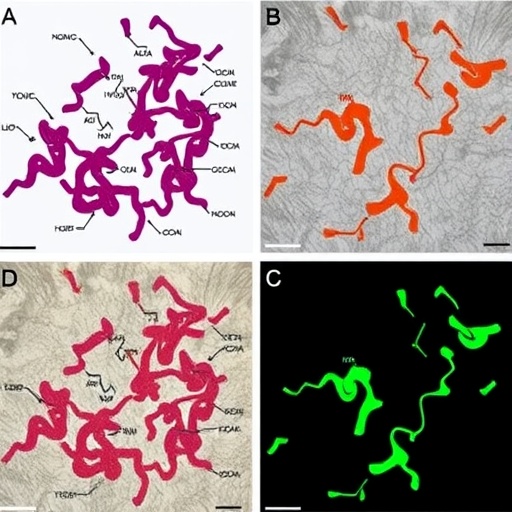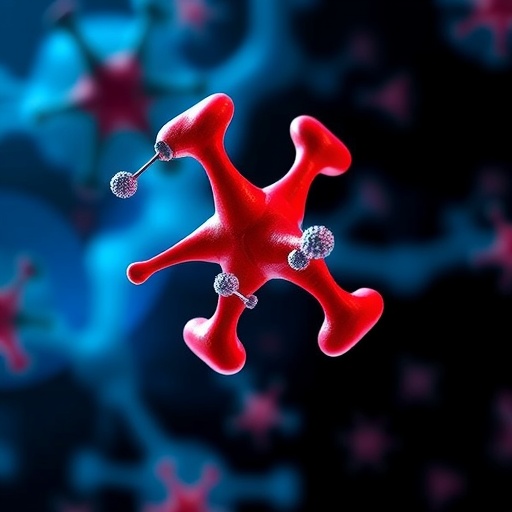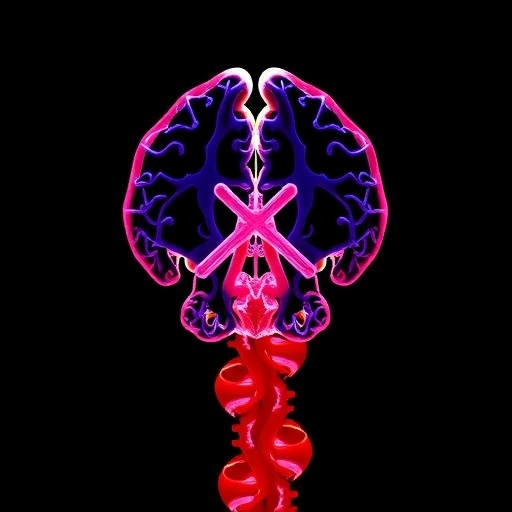
In a groundbreaking development poised to transform the therapeutic landscape for inflammatory diseases and renal injuries, researchers have identified Zharp1-163, a novel compound exhibiting dual inhibitory effects on ferroptosis and necroptosisâtwo pivotal forms of programmed cell death. This discovery, unveiled by Ji, Du, Li, and colleagues, heralds a new era in managing conditions characterized by excessive or aberrant cell death pathways. The potential to simultaneously target these distinct yet interconnected cellular demise programs sets Zharp1-163 apart as a remarkable candidate for therapeutic intervention.
Inflammation and kidney injury are complex pathological conditions often exacerbated by dysregulated cell death. Ferroptosis, an iron-dependent lipid peroxidation-driven form of cell death, and necroptosis, a regulated necrotic pathway involving receptor-interacting protein kinases, have each been implicated individually in various disease states. Historically, therapeutic strategies have focused on either pathway in isolation, resulting in suboptimal efficacy. The advent of a molecule capable of modulating both pathways simultaneously offers a promising solution to this long-standing challenge.
The detailed mechanistic studies presented in this research illuminate how Zharp1-163 interferes with the execution phases of ferroptosis and necroptosis by targeting critical nodes within their respective signaling cascades. By attenuating lipid peroxide accumulation and impeding necrosome formation, the compound effectively halts cell death progression, enabling preservation of tissue integrity under injurious conditions. This duality of action not only compensates for the redundancy often seen in cell death mechanisms but also provides a robust protective shield against inflammatory insults.
Delving into the biochemical nuances, the study elucidates the compoundâs affinity for key enzymes such as glutathione peroxidase 4 (GPX4), a vital suppressor of ferroptosis, and receptor-interacting serine/threonine-protein kinase 1 (RIPK1), a central mediator in necroptosis initiation. Zharp1-163’s biochemical profile reveals a capacity to modulate these targets with high specificity and potency, offering clues toward its favorable pharmacological properties. Such precision targeting is crucial to minimize off-target effects, thereby enhancing clinical translatability.
In vivo experiments using models of inflammatory disorders and acute kidney injury underscore the therapeutic promise of Zharp1-163. Mice subjected to inflammatory stimuli displayed markedly reduced tissue damage and inflammatory cytokine release upon treatment. Likewise, in models mimicking renal ischemia-reperfusion injury, administration of the compound yielded significant preservation of renal function and architecture. These results illustrate not only the compound’s efficacy but also its potential to shift clinical paradigms in treating multifactorial diseases linked to cell death pathways.
Moreover, transcriptomic and proteomic analyses performed within the study reveal downstream effects of dual inhibition, including mitigation of pro-inflammatory gene expression and reduction in chemokine levels that perpetuate cellular damage. By intervening upstream in the inflammatory cascade, Zharp1-163 demonstrates potential to prevent secondary injury and chronic progression, which often complicates recovery from acute insult. This holistic influence on inflammatory milieu positions the compound as a versatile agent against a broad spectrum of pathological conditions.
The revelation of Zharp1-163âs capabilities also sparks interest in its application beyond kidney injury and inflammation. Given the role of ferroptosis and necroptosis in neurodegeneration, cardiovascular diseases, and cancer, there exists a tantalizing prospect that this moleculeâor derivatives thereofâcould be harnessed to tackle diverse and devastating illnesses. Such broad applicability enhances the compoundâs significance within the pharmaceutical landscape and encourages further exploration.
From a drug discovery standpoint, Zharp1-163 epitomizes the utility of rational design coupled with phenotypic screening in identifying multitarget compounds. The integration of computational modeling, biochemical assays, and cell-based systems facilitated the rapid pinpointing of a molecule capable of navigating complex biological pathways. This multidisciplinary approach exemplifies the evolving strategies in drug development aimed at addressing multifaceted diseases rather than singular targets.
Importantly, the safety profile of Zharp1-163 as reported in the preclinical studies hints at a favorable therapeutic window. No significant toxicity or adverse effects were observed at efficacious doses, paving the way for potential clinical translation. However, it remains imperative to conduct comprehensive pharmacokinetic and toxicological studies to ensure safety in humans and to optimize dosing regimens for maximal benefit.
Furthermore, this discovery accentuates the expanding appreciation of regulated cell death modalities as therapeutic targets. Where conventional apoptosis inhibition posed challenges in clinical utility, ferroptosis and necroptosis inhibitors are emerging as viable alternatives. The dual inhibition strategy adopted by Zharp1-163 exemplifies how deeper understanding of the interplay among cell death pathways can yield superior therapeutic outcomes.
In the broader context of inflammation-driven pathologies, the ability to mitigate both cell death and inflammatory signaling through a single agent may revolutionize treatment approaches. Chronic inflammation underlies a multitude of diseases, and the modulation of underlying cell death processes offers a route to interrupt vicious cycles of injury and immune activation. Zharp1-163 thus represents more than a molecular breakthrough; it embodies a conceptual shift toward integrated therapeutic solutions.
As the field progresses, the delineation of Zharp1-163âs mechanism of action may inspire the synthesis of next-generation dual inhibitors with improved pharmacodynamics and pharmacokinetics. Structural optimization guided by crystallographic and molecular docking studies could enhance binding efficacy and specificity. Additionally, combinatorial therapies employing Zharp1-163 with anti-inflammatory or immunomodulatory agents might unlock synergistic effects, broadening clinical applicability.
The emergence of Zharp1-163 also invites further inquiry into the crosstalk between ferroptosis and necroptosis pathways. Decoding the molecular interdependencies and feedback loops may reveal novel biomarkers for patient stratification and therapeutic monitoring. Such precision medicine approaches could maximize the clinical impact of dual inhibitors while minimizing unnecessary exposure.
In summary, the identification of Zharp1-163 as a dual inhibitor of ferroptosis and necroptosis stands as a milestone in cell death research and drug development. Its multifunctional capability to curtail deleterious cell death and inflammation provides a potent strategy against a spectrum of inflammatory disorders and kidney injuries. As this promising candidate advances toward clinical evaluation, it holds the potential to alleviate human suffering from conditions that have long evaded effective treatment.
The revelation of this compoundâs efficacy underscores the importance of continued investment in fundamental cellular biology and translational medicine. It highlights how expanding our comprehension of regulated cell death can translate into tangible therapeutic benefits. The scientific community awaits with anticipation the unfolding chapters of Zharp1-163âs journey from bench to bedside.
Subject of Research: Discovery of a dual inhibitor targeting ferroptosis and necroptosis for inflammatory disorders and kidney injury.
Article Title: Discovery of Zharp1-163 as a dual inhibitor of ferroptosis and necroptosis for the treatment of inflammatory disorders and kidney injury.
Article References:
Ji, Y., Du, S., Li, J. et al. Discovery of Zharp1-163 as a dual inhibitor of ferroptosis and necroptosis for the treatment of inflammatory disorders and kidney injury. Cell Death Discov. 11, 413 (2025). https://doi.org/10.1038/s41420-025-02693-5
Image Credits: AI Generated
DOI: https://doi.org/10.1038/s41420-025-02693-5
Tags: dual inhibitor of inflammationdysregulated cell death mechanismsferroptosis and necroptosiskidney injury treatmentlipid peroxidation in cell deathmechanistic studies of Zharp1-163novel compound for inflammationprogrammed cell death pathwaysreceptor-interacting protein kinasessimultaneous targeting of cell deaththerapeutic intervention for renal diseasesZharp1-163




